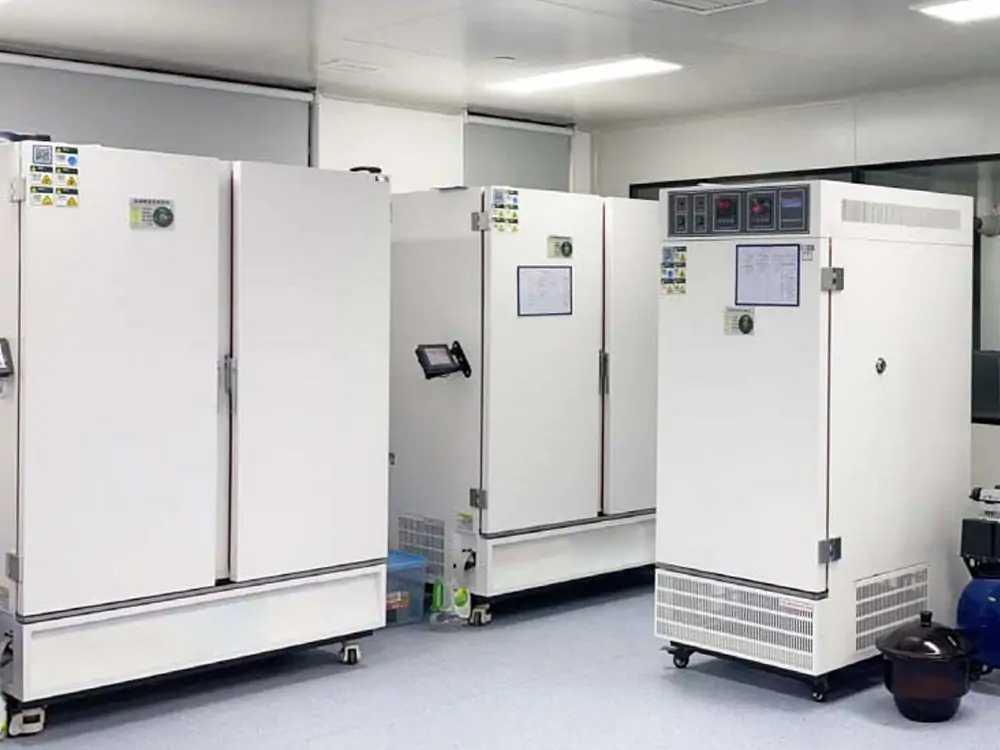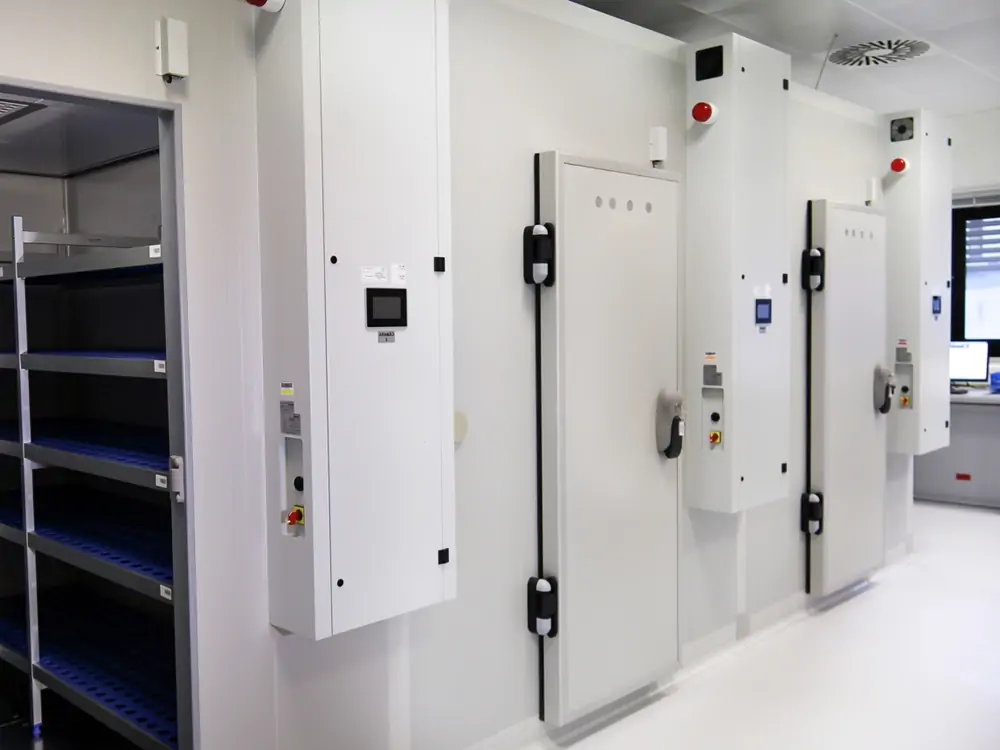Stability chambers are indispensable in many industries for ensuring product quality and reliability. Stability chambers are crucial in pharmaceuticals, food production, medical device manufacturing, or chemical engineering. It can help companies simulate and evaluate the stability and durability of products under different environmental conditions.
In this article, we’ll explore all there is to know about stability chambers. From its fundamentals to critical elements. Whether you are a seasoned professional or new to the concept, we will provide deep and comprehensive insights to help you better understand and utilize stability chambers.
What is A Stability Chamber?
A stability chamber is a complex, self-contained system. They can be used to mimic certain environmental conditions. With the right equipment, the environmental conditions can be maintained within very tight tolerances. For what could be days, weeks, or even months at a time.
Stability chambers, sometimes called stabilization chambers, are ideal for testing the shelf life of products. These include drugs, electrical components, and industrial materials. They allow the user to change parameters such as temperature and humidity. It helps perform a complete examination of various circumstances. Different products require a variety of testing circumstances. Traveling around the world to achieve other climate conditions is almost impossible. It is when stability chambers come in handy, making the job smoother and easier to control.
A stability test chamber is typically a sealable area constructed of rigid materials like stainless steel. It has integral equipment that allows for a change in internal conditions. It means the chamber will have equipment to heat or refrigerate, dry the air, or increase humidity as required. A well-designed stability test chamber can cycle through different environmental conditions. A sound stability chamber will include timers so testing can occur at specific times.
Industrial stability chambers are usually made in two distinct sizes – walk-in and reach-in. A walk-in stability test chamber is sufficiently large to allow technicians and engineers to enter. They test large pieces of equipment, materials, or batches of packaging in one go. The smaller, reach-in stability chamber may be sited on a desktop or any other convenient place in a laboratory. They can be used to apply environmental conditions to smaller components or assemblies. These are convenient. Because they are substantially less costly than walk-in devices, and a laboratory could invest in many of these units. In doing this, a company could simulate some different environmental conditions at the same time. It is something that walk-in chambers need help to do.
However, stabilization chamber work is becoming increasingly necessary. The process is being adapted for all products, including cars and trucks. Motorized vehicles are now taken all over the world. From the heat of the Sahara to the cold of the Arctic, they need to show that they can deal with extreme temperatures. It is insufficient to state that a car or truck will operate properly in extreme conditions, and full test results must be shown.
It has led vehicle manufacturers to develop bespoke stability chambers to match their products. Stabilization chambers sufficiently large to fit a car or truck are now commonplace. They can operate within temperature ranges of 60 degrees Celsius down to minus 50 degrees Celsius. These chambers can also simulate high humidity and the extreme ultraviolet light that the vehicle may be exposed to. Only in this way can a vehicle manufacturer show that their products can genuinely operate in their intended environment.

Stability Chamber Working Principle
A stability chamber is a complex, self-contained system. They can be used to mimic certain environmental conditions. With the right equipment, the environmental conditions can be maintained within very tight tolerances. For what could be days, weeks, or even months at a time.
Stability chambers, sometimes called stabilization chambers or stability testing chambers, are ideal for testing the shelf life of products. These include drugs, electrical components, and industrial materials. They allow the user to change parameters such as temperature and humidity. It helps perform a complete examination of various circumstances. Different products require a variety of testing circumstances. Traveling around the world to achieve other climate conditions is almost impossible. It is when stability testing chambers come in handy, making the job smoother and easier to control.
Stability Chamber Uses
The regulations, from pharmaceutical products to mobile communication devices, are becoming more critical. Therefore, using stability testing chambers is ever more important. With pharmaceuticals, the packaging rather than the products themselves must be tested. Almost all medical products are supplied in sealed bottles or blister packs. Both need to contain the medication safely regardless of the outside conditions. Stabilization chambers need to be able to ensure that this is the case.
But almost every product sold or supplied has to meet specific predetermined criteria on how they can be transported, stored, and kept before and during use. However, these kinds of chambers can be used to establish precisely what environmental criteria the packaging can endure. It is an essential factor. Since drugs may be transported worldwide and may have to handle all environmental conditions. In these cases, the drugs must be able to work as required.
Key Factors of A Stability Chamber
Temperature Control
The stability testing chamber must precisely control the temperature to simulate the product’s performance under different temperature conditions. Temperature control is usually between -20 °C and +70 °C. It must have the capability of rapid and stable temperature changes.
Humidity Control
Humidity is an essential factor in the stability of many products. The stability chamber should be able to operate at different humidity levels. It is usually in the range of 20% RH to 95% RH.
Light Control
For light-sensitive products, light control is critical. Stability chambers typically have light sources and lighting control systems to simulate different lighting conditions.
Vibration Control
Vibration can affect the stability of some products. Especially for electronic equipment and mechanical parts. Stability chambers may have vibration controls to simulate varying degrees of vibration.
Air Flow
Stability chambers must ensure uniform airflow inside to maintain an even temperature and humidity distribution for accurate test results.
Monitoring And Data Logging
Stability test chambers are usually equipped with monitoring systems. It can monitor real-time parameters such as temperature, humidity, light, and vibration and record these data for subsequent analysis and verification.
Interior SPace
The internal volume of the stability chamber must be large enough to accommodate the number and size of samples to be tested.
Stability Verification
Stability test chambers need to be validated to ensure their performance and accuracy. Validation typically includes temperature and humidity uniformity testing as well as stability testing.
Stability Chamber Qualification Guidelines
Users must be sure that a stabilization chamber works as required. The equipment needs to be subject to a well-defined set of tests that are designed to prove the abilities of the equipment. Generally, stability chambers must be qualified three times before they can be used for complete stability testing. IQ (the installation phase), OQ (the operations phase), and PQ (a phase aimed at performance verification in the field) are the most used identifiers for these steps. Any user will understand the equipment’s capabilities if a chamber is validated using these standard steps.
Validation staff perform these checks with calibrated measuring and testing equipment. The manufacturing company’s QA department routinely keeps records of performed tests. It is generally for a set period so that they can be referred to later. This form of qualification testing is intended to verify the worth of the equipment. Its ability to test the items that will be utilized in it reliably. All results are compared with a standard model and specification. In this way, it is easy for a user to see that a particular chamber is suited to their specific needs.

Stability Chamber Maintenance
Like any high-technology equipment, stabilization chambers need to be subject to periodic maintenance. It ensures they can operate efficiently and always reach the required levels and standards. A stabilization chamber can be both heated and cooled internally. Therefore, the most critical parts of the system are the assemblies that carry out these functions. These include the insulation that prevents the temperature from changing too quickly.
The maintenance program needs to focus on testing these essential parts. It ensures that they are operating within agreed parameters. However, equipment of this nature also needs to have its seals checked regularly. Typically, these critical parts are composed of rubber. They ensure that the internal temperatures remain constant. This can usually be found by gradually putting the chamber to a desired temperature and removing power to attain the room temperature. The time that the internals take to attain the room temperature can be used to determine the leakage factor with the chamber.
The maintenance requirements for a stabilization chamber will increase with time and the chamber’s usage. The thermal stress is excellent if the chamber goes from a high to a low temperature. It is applied to all internal components and will be significantly higher than one that is less stressed.
The manufacturer will have carried out this test as part of the original design specification. They will have typical leakage figures. These can be used as a base point, and future testing can be compared with these figures. A good stability chamber manufacturer will have this information.
Stability test chambers are essential pieces of technological equipment. But they have to be properly maintained if they are going to work correctly. Any machine needs to have a coherent service schedule. Something like a chamber with the thermal stresses that are placed on it needs to receive more frequent checking.
Conclusion
Regarding the stability testing chamber, we have gained insight into the indispensable nature of this critical tool across various industries. The stability test chamber is vital to ensuring product quality and safety. Through the stability chamber, we can simulate multiple environmental conditions. It provides product stability and availability under different storage conditions.
Additionally, we explore key elements of stability chambers, such as temperature, humidity, light, and vibration control, and how to maintain and monitor these devices properly. It is critical for researchers and producers in all walks of life.
All in all, stability chambers play an indispensable role in modern industry. They are at the heart of product quality control and safety assurance. Hopefully, this article has given you a comprehensive understanding of stability testing chambers to help you succeed more in your field. If you have any questions about stability test chambers or require further information, please do not hesitate to contact us. We are a professional stability chamber manufacturer. We will do our best to provide you with support and guidance.